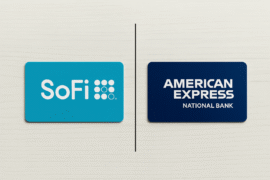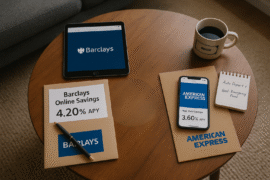This article may contain references to products or services from one or more of our advertisers or partners. We may receive compensation when you click on links to those products or services. Nonetheless, our opinions are our own.
- Key Highlights
- Introduction
- Understanding Mortgage Basics for a $200K House
- Preparing for Your Mortgage Application
- Beginner’s Guide to Mortgage for a $200K House
- Conclusion
-
Frequently Asked Questions
- What is the average interest rate for a $200K mortgage?
- How much down payment do I need for a $200K house?
- What factors determine the monthly mortgage payment for a $200K house?
- How does the interest rate affect the monthly mortgage payment?
- What additional costs should I budget for?
- How can I reduce my monthly mortgage payment?
- Recommended Reads
Key Highlights
- Several factors influence the monthly mortgage payment for a $200,000 house, primarily the interest rate and loan term.
- Other costs, including property taxes, homeowners insurance, and potential private mortgage insurance (PMI), also contribute to the monthly payment.
- Understanding these components and exploring different loan options are crucial steps in determining affordability.
- Budgeting for additional homeownership expenses like property taxes and potential HOA fees is essential.
- Utilizing online mortgage calculators can provide estimates of monthly payments based on various loan scenarios.
Introduction
Navigating mortgages can be challenging, especially when determining your monthly payment for a $200,000 house. Your monthly payment depends on multiple factors, including interest rates, the loan amount, and the loan term you choose. By understanding these elements, you can assess the total cost of a mortgage and make informed financial decisions.
Understanding Mortgage Basics for a $200K House
Before discussing details, it is essential to understand what a mortgage is. A mortgage is a loan provided by a lender, typically a bank or mortgage company, to help finance a home purchase. The borrower repays the loan, plus interest, over a specified period.
If you purchase a house for $200,000, the mortgage may cover a significant portion of the cost, depending on the size of your down payment. Understanding how the loan amount, interest rates, and loan terms interact will help determine affordability.
What Is a Mortgage and How Does It Work?
A mortgage is a home loan agreement between a borrower and a lender. The lender provides funding to purchase the home, and in return, the borrower agrees to repay the loan with interest over a set period. Common loan terms include 15-year and 30-year options, though other terms may be available.
A monthly mortgage payment typically consists of several components:
- Principal: The portion of the payment that reduces the loan balance.
- Interest: The cost of borrowing the money.
- Property taxes: Assessed by local governments and typically included in the monthly payment.
- Homeowners insurance: Protects against damages and risks to the home.
- PMI (if applicable): This is required for borrowers who put down less than 20% of the home’s price.
Some lenders require property taxes and homeowners insurance to be paid into an escrow account, simplifying budgeting for these expenses.
Key Terms You Need to Know Before Applying
Understanding mortgage-related terms will help you navigate the application process with confidence:
- Amortization Schedule: A breakdown of your monthly payments, showing how much goes toward the loan balance, interest, property taxes, and homeowners insurance.
- Mortgage Insurance: If your down payment is less than 20%, lenders may require mortgage insurance to protect themselves in case of default.
- Homeowners Insurance: Protects your home from damages due to fire, theft, or natural disasters.
- Loan Type: Different mortgage types, such as conventional loans and FHA loans, have varying requirements and benefits. Exploring your options can help you choose the best loan for your situation.
Preparing for Your Mortgage Application
When applying for a mortgage, lenders evaluate financial factors to determine your eligibility. Preparing in advance by gathering the required documents and understanding your financial situation can improve your chances of approval and secure better loan terms.
The Importance of Credit Scores and How to Improve Yours
Your credit score plays a crucial role in mortgage approval and interest rate determination. Higher credit scores generally result in lower interest rates and better loan terms.
Checking your credit score before applying for a mortgage is advisable. Reviewing credit reports from Experian, Equifax, and TransUnion helps identify errors and areas for improvement. Steps to improve your score include:
- Paying bills on time.
- Reducing outstanding debt.
- Maintain a low credit utilization ratio.
Saving for Down Payment and Closing Costs
Beyond monthly mortgage payments, prospective homebuyers should prepare for upfront costs. The down payment is a percentage of the home’s price paid upfront, affecting the loan amount and interest rates.
Closing costs, including appraisal fees, lender fees, and title insurance, typically range from 2% to 5% of the loan amount. Setting up a dedicated savings account and automating transfers can facilitate saving for these expenses.
Beginner’s Guide to Mortgage for a $200K House
Understanding the mortgage process can make home buying more manageable. The following steps outline the mortgage application process from start to finish.
Required Documents and Information for Mortgage Application
Lenders require documentation to assess financial stability and repayment ability. Key documents include:
- Proof of Income: Recent pay stubs, W-2 forms, and tax returns.
- Employment Verification: Confirmation of job status and salary.
- Asset Documentation: Bank statements and investment account summaries.
Step 1: Assess Your Financial Health
Before applying, evaluate your financial standing by reviewing income, expenses, and outstanding debt. Creating a budget that accounts for housing, utilities, debt payments, and daily expenses can help identify savings opportunities.
Lenders consider the debt-to-income ratio (DTI) when assessing mortgage eligibility. A lower DTI indicates strong financial management and can improve mortgage approval chances.
Step 2: Determine the Right Mortgage Type for You
Various mortgage options exist, each with different requirements and benefits:
- Conventional loans: These typically require higher credit scores and down payments.
- FHA loans: Government-backed loans with lower credit score and down payment requirements, popular among first-time buyers.
Choosing between a 15-year or 30-year mortgage affects monthly payments and overall loan costs. Shorter terms usually have lower interest rates but higher monthly payments, while longer terms spread costs over more years.
Step 3: Shop Around for the Best Mortgage Rates
Comparing mortgage rates from multiple lenders can help secure the best terms. Even a slight difference in interest rates can impact total loan costs. Factors to consider include:
- Interest rates
- Loan origination fees
- Closing costs
Using online mortgage calculators can help compare various loan options.
Step 4: Apply for Pre-Approval
Pre-approval strengthens your position as a buyer by demonstrating financial readiness. Lenders review financial documents, check credit history, and determine a maximum loan amount.
Pre-approval provides an estimated interest rate and annual percentage rate (APR), allowing for better financial planning. It also signals to sellers that you are a serious buyer.
Step 5: Finalizing the Mortgage Offer
Once an offer is accepted, the lender issues a formal loan estimate outlining loan terms, interest rate, monthly payments, and closing costs. Reviewing this document ensures that it aligns with expectations and affordability.
The underwriting process follows, involving a detailed financial and property review. Once approved, the closing date is scheduled to complete the home purchase.
Conclusion
Understanding the mortgage process for a $200K house is crucial for financial stability. Evaluating mortgage terms, improving credit, and comparing loan options can help secure favorable terms. By preparing financially and following key steps, homebuyers can confidently navigate the mortgage process and secure a manageable monthly payment.
Frequently Asked Questions
What is the average interest rate for a $200K mortgage?
Interest rates vary based on market conditions and individual financial factors. Credit score, loan type, and down payment influence the rate you receive.
How much down payment do I need for a $200K house?
A 20% down payment ($40,000) eliminates private mortgage insurance (PMI), but some programs allow down payments as low as 3% ($6,000).
What factors determine the monthly mortgage payment for a $200K house?
The loan amount, interest rate, loan term, property taxes, homeowners insurance, and HOA fees affect the monthly payment.
How does the interest rate affect the monthly mortgage payment?
Higher interest rates increase monthly payments, while lower rates reduce them. A mortgage calculator can help estimate costs based on rate changes.
What additional costs should I budget for?
Homebuyers should account for closing costs (2%-5% of the loan amount), property taxes, homeowners insurance, HOA fees, and maintenance expenses.
How can I reduce my monthly mortgage payment?
Options include making extra principal payments, selecting a shorter loan term, increasing the down payment, or refinancing to a lower interest rate.

Reviewed and edited by Albert Fang.
See a typo or want to suggest an edit/revision to the content? Use the contact us form to provide feedback.
At FangWallet, we value editorial integrity and open collaboration in curating quality content for readers to enjoy. Much appreciated for the assist.
Did you like our article and find it insightful? We encourage sharing the article link with family and friends to benefit as well - better yet, sharing on social media. Thank you for the support! 🍉
Article Title: Mortgage for a 0K House: How Much Will You Pay Monthly?
https://fangwallet.com/2025/03/04/mortgage-for-200k-house/The FangWallet Promise
FangWallet is an editorially independent resource - founded on breaking down challenging financial concepts for anyone to understand since 2014. While we adhere to editorial integrity, note that this post may contain references to products from our partners.
The FangWallet promise is always to have your best interest in mind and be transparent and honest about the financial picture.
Become an Insider

Subscribe to get a free daily budget planner printable to help get your money on track!
Make passive money the right way. No spam.
Editorial Disclaimer: The editorial content on this page is not provided by any of the companies mentioned. The opinions expressed here are the author's alone.
The content of this website is for informational purposes only and does not represent investment advice, or an offer or solicitation to buy or sell any security, investment, or product. Investors are encouraged to do their own due diligence, and, if necessary, consult professional advising before making any investment decisions. Investing involves a high degree of risk, and financial losses may occur including the potential loss of principal.
Source Citation References:
+ Inspo
There are no additional citations or references to note for this article at this time.












































